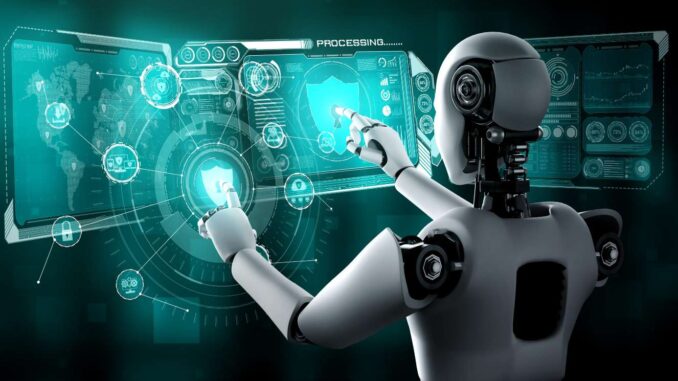
“AI for Social Good” refers to the application of artificial intelligence technologies and methodologies to address pressing social, environmental, and humanitarian challenges.
This initiative seeks to leverage the capabilities of AI to promote positive outcomes for society, enhance well-being, and foster equitable development. Here are several key areas where AI can be harnessed for social good, as well as specific examples and implications:









### **Key Areas of Application**
1. **Healthcare**
– **Predictive Analytics**: AI can analyze medical data to predict disease outbreaks, identify high-risk patients, and enhance diagnostics (e.g., using image recognition for early detection of diseases like cancer).
– **Telemedicine**: AI-powered platforms can result in better access to healthcare in remote areas, providing virtual consultations and personalized treatment plans.
– **Drug Discovery**: AI can accelerate the drug discovery process by predicting how different compounds will behave, leading to faster development of treatments for various diseases.
2. **Education**
– **Personalized Learning**: AI can tailor educational content to individual students’ needs, helping them learn at their own pace and addressing knowledge gaps.
– **Access to Resources**: AI can help develop platforms that provide educational resources to underserved communities, improving learning opportunities globally.
– **Assessment and Feedback**: Intelligent tutoring systems can provide immediate feedback and assessments to students, enhancing the learning experience.
3. **Environmental Sustainability**
– **Climate Modeling and Prediction**: AI can improve climate models, helping predict environmental changes and assess the impact of various factors on global climate patterns.
– **Resource Management**: AI algorithms can optimize energy usage in buildings, improve waste management, and enhance agricultural practices through precision farming techniques.
– **Wildlife Conservation**: AI can analyze data from various sensors and cameras to monitor wildlife populations and prevent poaching.
4. **Disaster Response and Humanitarian Aid**
– **Predictive Analytics for Disaster Preparedness**: AI can analyze data from various sources to predict natural disasters and optimize emergency response strategies.
– **Crisis Mapping**: AI tools can create detailed maps to visualize affected areas and enhance coordination among humanitarian organizations during crises.
– **Resource Allocation**: AI can optimize the distribution of resources, ensuring that aid reaches those who need it most efficiently.
5. **Social Justice and Inclusion**
– **Bias Detection**: AI tools can help identify and address biases in systems that affect marginalized communities, fostering equity and fairness.
– **Accessibility Solutions**: AI can enhance technology for individuals with disabilities, including speech recognition, automated captioning, and navigation aids designed for the visually impaired.
– **Civic Engagement**: AI can support efforts to increase civic engagement by analyzing social media and other online platforms to understand public sentiment and mobilize communities.
6. **Economic Development**
– **Entrepreneurship Support**: AI can provide insights and resources for entrepreneurs in developing regions, helping them make informed decisions and identify market opportunities.
– **Financial Inclusion**: AI can facilitate access to financial services for underserved populations, enabling microloans and other financial products tailored to specific needs.
### **Examples of AI for Social Good Initiatives**
– **Google’s AI for Social Good**: Google has launched various initiatives leveraging AI to tackle challenges such as disaster response, wildlife conservation, and healthcare.
– **AI4Good**: This initiative, led by organizations like ITU (International Telecommunication Union) and various tech companies, focuses on using AI technologies for the United Nations Sustainable Development Goals (SDGs).
– **Data Science for Social Good**: A program that connects data scientists and organizations focused on social issues to solve real-world problems through data-driven insights.
– **Wildlife Protection**: Organizations like the Wildlife Conservation Society and Rainforest Connection use AI to monitor wildlife and protect endangered species from poaching and habitat loss.
### **Challenges and Considerations**
While the potential of AI for social good is significant, there are challenges that must be addressed:
– **Ethical Concerns**: The deployment of AI must consider ethical implications to prevent misuse and adverse consequences.
– **Data Privacy**: AI applications must balance the benefits of data utilization with the need to protect individuals’ privacy and security.
– **Bias and Fairness**: AI systems can unintentionally perpetuate existing biases, so developers must prioritize fairness and inclusivity in their designs.
– **Access and Equity**: Efforts should be made to ensure equitable access to AI technologies and resources, particularly in underserved communities.
### **Conclusion**
AI for social good represents an exciting frontier in the application of technology with the potential to make a meaningful difference in society. By focusing on solving critical social issues and promoting well-being, stakeholders—including governments, NGOs, businesses, and communities—can collaborate to harness the power of AI responsibly and ethically. As we continue to explore this path, it is essential to keep the interests and voices of those most affected by these technologies at the forefront of decision-making processes.


Leave a Reply